Scientific Facts
| Common Name: | Himalayan rabbit |
| Scientific Name: | Oryctolagus cuniculus |
| Life Span: | 5 to 8 years |
| Size (Adult): | Small/mini |
| Weight (Adult) | 2.5 to 5 pounds |
| Habitat: | Human homes, gardens, yards, and farms |
| Body Shape: | Cylindrical |
| Country of Origin: | Himalayas/ USA |
Physical Description
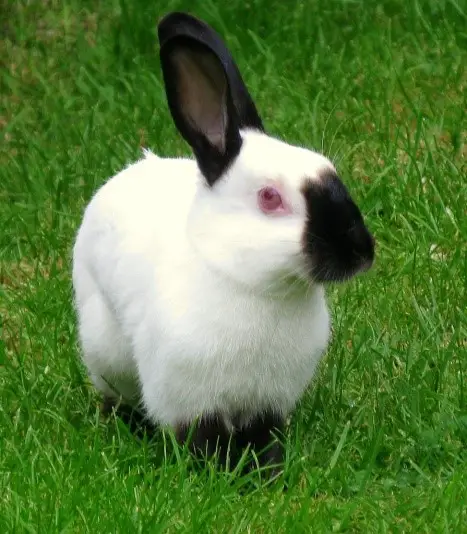
The Himalayan rabbit is one of the rarest rabbit breeds that are often mistaken for another spotted white rabbit, the Californian. It is a medium-sized rabbit with a white body and colored markings. Rabbit associations recognize Himalayan colors like blue, black, lilac, and chocolate.
The Himalayan is known as one of the oldest rabbit breeds and is also one of the calmest. Adults Himalayans weigh from 2.5 to 4.5 pounds and have an ideal weight of 3.5 pounds. This has a cylindrical, well-built body with a lovely coat. This is also the only cylindrical bodied rabbit breed.
This rabbit breed is from areas with cold climates but may be seen with black colors on their coats that make them a phenocopy of a black rabbit breed. The Himalayan is also known as Black-Nose, Egyptian, and Chinese. Usually, this rabbit is in a stretched out pose. At this position, you will be able to better admire its fine bone and its skinny body that is very different from other rabbit breeds. This is because the Himalayan is not raised for meat, and its main purpose is for the show. Breeders say that the Himalayan was once raised for their coats.
The Himalayan is the only rabbit breed with an extra set of nipples. This rabbit breed is the ancestors of the Californian rabbit that is one of the most popular meat rabbits.
Coat Markings
The Himalayan is known for its unique and distinct markings that are quite similar to the Himalayan cat. These have dark ears, dark feet and hind feet, dark tails, and a large dark spot on the nose. These special marks change according to the environment where the rabbit is and can also change due to the rabbit’s age.
The cold can darken the dark marks and can even enlarge it or add more spots around the eyes and near the rabbit’s genitals. These marks are not to disqualify a rabbit bred for the show because these are not on any usable part of the pelt. However, if the marks are found in the usable areas of the coat, like the rabbit’s belly or the pin bones, then the rabbit may be disqualified.
Meanwhile, the warm weather may shrink and lighten the marks and cause the hairs to change to white color. In very hot weather, the rabbit may develop white toenails. Expect that chocolate and lilac rabbits have bigger markings compared to blues and blacks. The chocolate and lilacs are also prone to develop disqualifying marks.
Himalayan rabbit babies are very sensitive to temperature. Most kittens that are placed inside a warm nest will look like an albino. This rabbit also has red eyes, and those with other eye colors are misidentified as sable points. If the nest becomes too cold, or if a kitten falls out of its nest, these will develop dark bands on their fur.
In addition, because of the Himalayans constantly changing colors, most breeders do not use markings as a factor to breed this rabbit. Himalayans come with a double copy of the CH gene and have a double copy of the self-gene, causing black color. There are also varieties of the lilac and the chocolate Himalayan and those with bb will become chocolate. Those with dd will become blue, and a rabbit with the bb and dd will show as a lilac breed.
History of the Breed
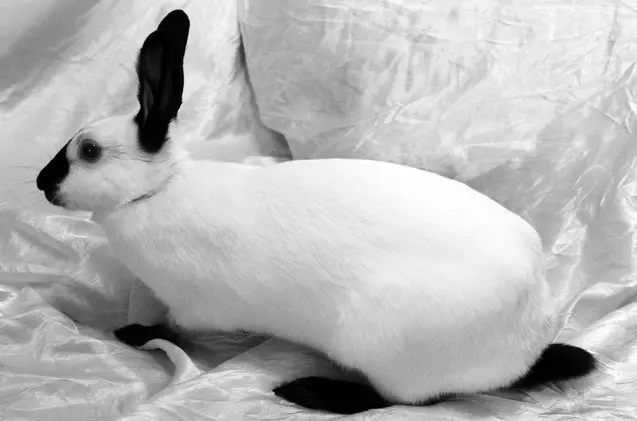
The Himalayan rabbit is one of the first rabbit breeds, and until today, their origin remains unknown. These rabbits may be from the Himalayas, and the original variety may have been black while the blue may have been developed later. The lilac and chocolate were created from different crosses according to the place where they originated.
The American chocolate was created by Ron Smelt from California. He mixed a chocolate English spot to Himalayans while the lilacs were created by combining the chocolate and the blue Himalayans. Different combinations created lighter blues and early lilacs, and this was not acceptable. Further studies and intense breeding resulted in the Himalayan rabbit design that we know today.
The Himalayan is vital to the creation of many rabbit breeds, including the Californian. This breed was made by combining a Himalayans and other breeds like the New Zealand or the Standard Chinchilla. The Californian breed was used in breeding many rabbit breeds such as the Champagne d’ Argents.
Fast Facts

The Himalayan rabbit is one of the gentlest and most patient rabbit breeds. It is docile and friendly, which is why it is very popular as a rabbit breed for seniors, children, and seniors. This rabbit can also be used as a therapy rabbit and a domesticated pet because of its unique and pleasant behavior.
Reproduction

Himalayan rabbits reproduce just like other domesticated rabbits. This breed is force bred to get baby Himalayan rabbits. As with other rabbits, this can breed all year round. Himalayans can start as early as 5 to 8 weeks old. The male is placed in an enclosure, and then after a few days, the female is added. This practice can increase the chances of breeding success.
Right after placing inside the cage, the female will remain still as the male gets to know her better by sniffing her. She will usually resist this, and the two will engage in a jumping and chasing activity. However, after a while, the female will give in and allow the male to sniff her and mount her. However, if mating does not happen after hours of waiting, remove the female from the cage and re-introduce her after another hour.
Rabbit mating happens quickly, and you will know that it was successful when the male leaves the female alone. The female is removed from the cage and then placed in a separate enclosure. She will stay here until she gives birth, which is usually in 38 days.
The female will select a good area to build a nest. She will be restless and will usually avoid eating or drinking. Use a birthing box that is any kind of box or container filled with soft hay. The female may also use other materials for her nest and may even use her own fur.
The female will soon give birth up to five babies. A female can become pregnant three to four times a year. Just like other rabbits, the mother Himalayan will nurse her babies and clean them up, but she will not stay long. She will leave her blind, deaf, and naked, very vulnerable babies. She will return only every nighttime to nurse them for a very short while. The baby Himalayans will open their eyes in 5 to 7 days and will wean from their mother in 10 to 12 days.
Personality and Behavior

As mentioned, the Himalayan is one of the gentlest rabbit breeds and is not known to bite or nip even when held by strangers. And because of its small size, it is ideal for singles, seniors, and people who are new to taking care of a rabbit. This rabbit is not the active type that kids love, but this can be picked up and petted.
Comparable Breeds
The Himalayan rabbit is comparable to its predecessor, the Californian rabbit, and this is because of the markings on the face, nose, ears, and body. However, the Himalayan is a small rabbit while the Californian is a large one and can weigh up to 10.5 pounds. It has a commercial body shape and a lifespan of 10 years. The Californian is also a gentle and affectionate breed but is more active than the Himalayan. It is ideal for singles, apartment dwellers, and for seniors.
Care of Himalayan Rabbits
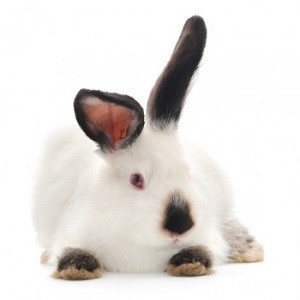
Caring for a Himalayan Rabbit is like caring for other breeds. Be sure to provide the right diet, housing, proper medical treatment, and companionship.
When it comes to its diet, it must always have hay. This is the bulk of a rabbit’s diet, aside from eating rabbit pellets, vegetables, and fruits. This is a way to create a healthy, well-rounded rabbit diet.
Place fresh water and hay in the enclosure because hay is an important part of a rabbit’s diet. Hay is rough and can keep their digestive tracts regular. An inverted water bottle with a spout is also a good spill-proof way to drink water. Your rabbit will not get wet even if it runs and plays inside its cage.
Your pet should eat the right food. Avoid food with pesticides, toxins, and herbicides by feeding this organic fruits and vegetables only. Also, consider feeding younger rabbits with alfalfa hay because it is rich in calcium ideal for growing healthy and strong bones. Meanwhile, adult Himalayan Rabbits will love eating legume hay.
Himalayan Rabbits are naturally calm and friendly, but you must still invest time and effort to train them. Rabbits are social animals and will need companions aside from interacting with their owners. Rabbits with constant companions are healthier, happier, and well-rounded pets than those that are left inside their cages.
Himalayan Rabbits are mostly active in the daytime and sleep in the evenings. Captive rabbits can sleep 8 hours a day and may sleep together to keep themselves warm.
Supplies and Cages
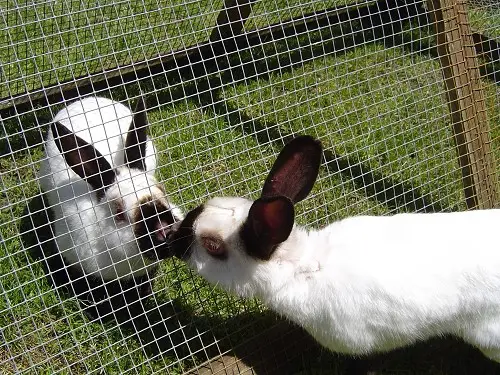
Himalayan Rabbits are very energetic and may need a big enclosure where it can play, sleep, and run. Despite the rabbit’s size, its cage should be made of wire with a very strong metal frame. The bottom should be removable and to make it easier to dispose of the rabbit droppings as well. The floor should have soft bedding and lined with good quality bedding.
You must install a rabbit hay feeder along the sides of the enclosure so your rabbit can easily get hay to eat or just to chew on. For the bedding, use hay, wood pellets, or palette bedding. To clean the cage, place your pets in a separate safe and clean cage.
Use only an effective, non-toxic cleaner or natural cleaning product like white vinegar, baking soda, and water or lemon. You must never use household cleaners or toilet cleaners because these may have dangerous ingredients that can affect your pet’s health.
Have an extra cage if you want to care for baby Himalayan Rabbits. Baby rabbits are very vulnerable as they are born naked, deaf, and blind. Make a cage with a warm enclosure to keep these at the correct temperatures. A smaller cage with a lamp or lighting will keep kits dry, warm, and safe from predators.
Health Concerns
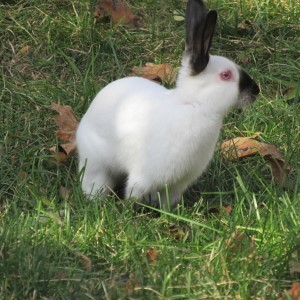
A Himalayan Rabbit is a healthy rabbit breed, and these are not affected by any particular health issue or disease. Possibly the most common condition that the Himalayan may be affected with are common pests like mites, ticks, and fleas. The Himalayan is naturally found in their environment.
On the other hand, Himalayan Rabbits are not immune to common diseases that affect domesticated rabbits. This is one of the reasons why you must always monitor your rabbit’s health and behavior. Any change could be due to an illness. As early as the baby opens its eyes and get out of its nest, take it to the vet for basic vaccinations and tests.
The vet will assess the overall health and development of your pet and assess the health condition of young rabbits. Small and very young rabbits have sensitive digestive systems and, therefore, could be prone to enteritis, bloat, and stasis. These may affect rabbits that are only two months of age.
Always be aware of your rabbit’s condition and check for any signs of illness like poor appetite, nasal and eye discharges, diarrhea, constipation, and vomiting. Watch out for signs like an unsteady gait, restlessness, teeth grating, and sleeping for a very long time because these could be symptoms of a serious condition.
Another important part of dealing with pet rabbits is deworming. Your Himalayan must be treated for worms at least two times a year and must be done during spring and fall. This is a very important thing especially in rabbits that are raised from the wild or from wild parents
All rabbit breeds should be dewormed using a pea-sized deworming paste. Put this in the rabbit’s mouth, and this will lick and swallow the medication until everything is gone. Follow your vet’s prescription.
Dental Care
A Himalayan Rabbit’s teeth will grow continuously, and sometimes, this can grow to extreme lengths, which can pierce their mouth and gums, which can cause a lot of pain and discomfort. It is your task to make sure that the rabbit’s teeth don’t overgrow to avoid pain and stress.
You can help by feeding it hay because this can grind the teeth naturally, as it chews. Put pieces of wood, baskets, or other toys that will file the rabbit’s teeth. Always monitor your rabbit’s dental health to save on medical and dental bills.
Spaying or Neutering
Rabbits are promiscuous, and having several rabbits could be a disaster if you overlook spaying or neutering your pets. Spaying and neutering must be done at a young age. But, some vets wait until the rabbits are six months before spaying. Himalayan bucks are also neutered at a young age to reduce aggressive behavior. And for any questions about spaying and neutering, talk to your vet. These procedures are simple and won’t harm your pet, so don’t forget to consult your vet about these.
Grooming
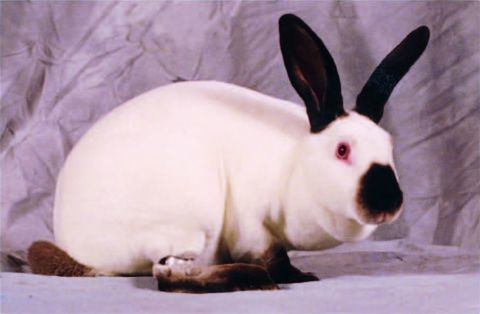
Himalayan Rabbits are like other domesticated rabbits in a way that they are meticulous groomers. This rabbit will groom themselves for many hours. Rabbits will groom each other, and this is a way to bond with other rabbits.
Himalayan Rabbits have short furs, but despite this, it will need regular grooming. To groom your pet, use a sturdy brush. Grooming will help keep its coat clean, shiny, and free from pests. Groom at least once or twice a week.
Grooming should also be done more frequently during their molting period. Molting is when the rabbit’s fur sheds so that new fur will grow. Grooming during molting will prevent wool blocks and will keep the rabbit from ingesting their own fur.
If the rabbit is dirty, just spot clean it with a damp towel. Don’t give it a bath because this can cause a lot of stress. Wipe the rabbit down with the towel and use a dry one after you’re done. Take your rabbit to the vet or to a pet groomer to clean its ears and to trim its nails.
Availability – Where to Get One?

You can buy a Himalayan Rabbit from a breeder or a retailer. The price will vary whether you are buying a pet or a show rabbit. Expect the price to vary depending on the gender, size, coat quality, color, and overall appearance of the rabbit.
If you are looking for a breeder, choose one that breeds healthy Himalayan Rabbits and not rabbits with genetic disorders. Purchase your rabbits from reliable breeders. This rabbit is also available in local trade fairs and farm events. There are also shows from ARBA that highlight this lovely breed.
How to Care for a Himalayan Rabbit
This is a summary of how to care for a Himalayan Rabbit. Caring for a Himalayan is just like caring for other breeds. Consider the four basic components of care: the correct diet, enclosure, companionship, and vet or medical care.
For the Himalayan’s correct diet, the main food is hay. Hay is vital in their diet to grind their teeth, keep their digestive system healthy, and of course, to maintain regular bowel movements. You may also feed it rabbit pellets, vegetables, and fruits for a well-rounded rabbit diet.
Always have water and hay inside the rabbit’s cage. Place water in a large, heavy, and shallow dish so your rabbit can drink from it without spilling.
Domesticated bred rabbits like the Himalayan are calm, friendly, and docile, but you still need to train and bond with them. Just like any rabbit, invest in training and interacting with your pet daily. Captive rabbits are social animals and will need a rabbit companion or several companions. Keep in mind that rabbits can grow healthy and develop a good temperament when it socializes with their owner and their companions.
Finally, take your pet to the vet early for vaccinations and tests. Your rabbit must be given a clean bill of health before it is placed in a cage with other rabbits, with pets and also with people. You must learn the different signs of illness in rabbits so you can take your pet to the vet at the first sign of illness.
FAQs
Can Himalayan Rabbits swim?
Himalayan Rabbits are like other domesticated rabbits because these don’t like water. Most rabbits do not want to get wet and will not like a bath because water is very stressful for them.
Should you rescue a wild rabbit from the forest?
Never get a wild animal like a rabbit from the forest. This is a wild animal, and therefore, you won’t be able to tame it and make it your pet because it will remain wild and hence, dangerous. So, if you see an injured rabbit, call animal services as soon as it can.
Are Himalayan Rabbits endangered?
No, Himalayan Rabbits are not endangered. Himalayan Rabbits are domesticated rabbits and are available from local and international breeders as well, and in pet shops, trade shows, and of course, these are also found in human homes as pets.
How do you tame a wild rabbit?
A wild rabbit cannot be tamed because you might end up bitten and hurt. You may train a captive-bred rabbit because most of these rabbits have a warm, calm, and happy behavior and are friendlier compared to wild rabbits.
Will Himalayan Rabbits eat fruits and vegetables?
Yes, Himalayan Rabbits will eat fruits and vegetables, and also you may feed your Himalayan Rabbits commercially prepared pellets or rabbit food which have nutrients for your pet’s good health.
How do you clean a Himalayan’s cage?
First, remove the rabbit inside the cage and place it in a clean enclosure. Dispose of the droppings in the pan under the cage. Hose the cage down and use a brush and cleaning product and clean thoroughly. Clean the cage walls, bottom, accessories, and rabbit toys. Replace the cage bedding and make sure that everything is dry before placing the rabbit back inside its cage.
Where do Himalayan Rabbits live?
Himalayan Rabbits are domesticated rabbits and are found safe and sound inside human areas. Himalayan Rabbits live in human and commercial areas like breeding kennels, pet centers, and human homes as good pets.
Will Himalayan Rabbits eat their own poop?
Like all rabbit breeds, the Himalayan will eat its poop because these have nutrients in them. But after eating this once, they won’t eat it the next time. No one knows why rabbits eat their poops, and you can prevent this by removing their droppings as soon as the rabbit defecates.
Can you keep a Himalayan as your pet?
You can keep the Himalayan as a pet because it is docile and friendly. This is a good pet for families and for families with children, but a large space is necessary because a Himalayan is very active.
What do Himalayan Rabbits eat?
Himalayan Rabbits are herbivorous, and thus, it will eat only plants. These will eat all parts of the plant like its roots, bark, seeds, weeds, flowers, and leaves. But when it is in captivity, it can eat commercially prepared food, vegetables, seeds, and fruits.
Are Himalayan Rabbits carnivorous?
No, these rabbits are not carnivorous or will never eat meat. These are herbivores, which mean that these will consume plants or plant parts like roots, flowers, twigs, stems, bark, leaves, seeds, and many more.
Can you keep two or more Himalayans inside one cage?
You can keep two or more rabbits in one cage for as long as you have a very large cage to keep every individual in. The cage must be large, comfortable, and safe.
How do you take care of baby Himalayan Rabbits?
If you want to care for Himalayan Rabbit babies, put the kits in a comfortable and warm enclosure. Feed your baby rabbits soft food and keep these safe and warm. Protect them from predators found in your homes like your cat or pet dog. If you have seen wild-caught baby rabbits, don’t move them and call animal services for the proper rescue.
Do you need a heater inside a Himalayans cage?
We prefer you use a cage lamp to provide heat instead of a heater. But in cold climates, you must use a small heater and place this near the cage for a warm and comfortable place for your pet. This is also a good setup for taking care of incubating kits.
Will a mother Himalayan Rabbit eat her young?
There are female rabbit breeds that can eat their young. And if you find a female Himalayan Rabbit eating her young, remove it from the nest and never allow it to breed in the future.
Where do you put a Himalayan Rabbit’s cage indoors or outdoors?
Whether you want to put it indoors or outdoors, understand the pros and cons. You may place the cage indoors to protect it from the elements, but your pet will have a small space to play. This space may not be enough to house a large, or an adult Himalayan Rabbit. And when you place your cage outdoors, the rabbits may need to deal with the cold or heat, but at least they will have a large place to play and move about.
Do Himalayan Rabbits have good ears?
The Himalayan Rabbit has good hearing, and it can hear its predators even when these are located far away. Doing so can give it time to jump and escape the threat.
Can rabbits see in the dark?
Yes, rabbits have good vision, and they can even see at night very well. This is why some rabbit breeds and species prefer to forage for food at nighttime. Rabbits like the Himalayan Rabbit also have good smell and hearing, which allows them to locate predators in the area.
Does it hurt when a Himalayan Rabbit scratches you?
A Himalayan may be small, but it has sharp claws, especially on its hind feet. This rabbit can kick with its hind feet, which can inflict a lot of damage. Himalayan Rabbits will only do this when it feels threatened, so a well-tamed and calm pet will never hurt you.
Can you leave a Himalayan Rabbits indoors?
You may let a rabbit-like a Himalayan stay indoors but only under your supervision. Use a portable fence to keep it off areas that you don’t want it to go. And most importantly, rabbit-proof your home before allow your pets out of their cages to avoid accidents.
Are Himalayans territorial?
Breeders say that Himalayan Rabbits are also territorial when these are kept in a small enclosure. Males may develop aggressive behavior and fight other males during the breeding season. The aggressive males can hurt other males as they fight who is the better rabbit in the hierarchy.
How large must a Himalayan Rabbit’s cage be?
A Himalayan Rabbit is small, but it must be placed in a very large enclosure because it can be very active, especially when it is still young. For two large rabbits, double the size of this area. You must never overlook the cage size and make sure that your rabbits have space to play and have fun. Also, determine the number of rabbits that will live in the cage.
Are Himalayan Rabbits bites fatal?
Yes, Himalayan Rabbit bites can be very dangerous because the species may have rabies. Rabbit’s teeth may long and sharp, and this can easily tear off skin and flesh and will make a deep and infected wound.
Can Himalayans escape their enclosures?
Despite their size, Himalayan Rabbits can escape their cages by kicking and destroying their cages. These can jump over and escape if the cage is too low.
Can you prevent a Himalayan Rabbit from eating his poop?
You can stop a Himalayan Rabbit from eating his droppings by removing the droppings after the rabbit defecates, but no matter what, these rabbits will eat their dropping because they know it still has nutrients in them.
Can rabbit diseases be transmitted to humans?
Some rabbit diseases affect rabbits exclusively, while some are dangerous to humans. Therefore, if your rabbit is sick, take it to the vet as soon as you can so, it can get appropriate treatment. Understand the different signs of illnesses such as lack of appetite, loose stools, constipation, problems with breathing, and changes in behavior. You must take your pet rabbit to the vet at the first sign of illness.
Can you train your rabbit to walk using a collar and leash like a dog?
Some pet owners were happy to report that they can walk their pet rabbits on a leash. However, some say that this may depend on what breed of rabbit you have and the technique you used to train it.
Will Himalayan Rabbits identify their owners?
Some rabbit owners say that their pets can identify them from strangers and can tell if they are being handled by their owners or by someone else. They also said that their rabbits were skittish when held by other people but were calm in their arms.
Are all female rabbits cannibals?
An unpleasant behavior among rabbits is eating their young can be observed in some females. Experts say that this happens because the female is famished or thirsty after she gives birth. Some say that female rabbits do this in the wild to remove smell and traces of tissue and blood to protect kittens when one of her babies is stillborn.
How young a rabbit should be to get spayed or neutered?
This actually depends on the vet as to when to spay or neuter a pet rabbit. Some bucks are neutered at 3 months, and some will wait until the rabbits are 5 to 6 months old.
What happens when the teeth of a rabbit become longer?
When the teeth of the rabbit grow longer, these can cut their mouth and gums and cause a lot of pain and discomfort. This may also affect its appetite. This is why you must take your pet to the vet and dentist regularly. You can help your rabbit by feeding it hay since hay can grind their teeth as the animal chews.
How often do you visit the vet?
Rabbits must visit the vet twice a year. Young rabbits should be vaccinated against diseases as early as possible. Your pet should have an initial visit to a vet when they are just a few days or weeks old or area weaned from their mother.
Can rabbits tolerate the cold climate?
Yes, rabbits can stay in the cold and survive by looking for food that’s under the blanket of snow. Rabbits will use their legs to dig out snow and eat roots, shrubs, berries, and other unfrozen food.
Can Himalayan Rabbits remain outdoors?
A pet Himalayan may be allowed to remain outdoors, but you must rabbit-proof your outdoor area first. Use a portable perimeter fencing to reduce the area where the rabbit can roam free. Secure the fence poles to stop the rabbit from digging out and escaping. Take note that a Himalayan may be small, but it can still escape its cage if it is not trained to remain inside it.
Where do wild rabbits sleep in the wild?
In the wild, rabbits can sleep in holes or inside burrows, which are called warrens. Rabbits can also make deep holes to remain inside all day and even sleep inside it. But in captivity, they are forced to live in an enclosure that can accommodate more rabbits. This enclosure is secure and safe from predators, unlike their homes in the wild.
Can you place the cage of Himalayan Rabbits near other breeds or other pets?
You have nothing to worry about if the cage of a Himalayan is near other breeds because this rabbit is friendly, docile, and calm. Even if the cage is near other pets, it will still maintain its calm and friendly nature.
How do you care for abandoned baby rabbits?
If you find wild kits that are abandoned in their nests, call animal service ASAP. You must never take baby rabbits from the wild to become pets.
How many rabbits are you able to keep as pets?
You can keep three, four, or more rabbits as pets as long as you have a large cage to keep these safe and comfortable. Keeping only one rabbit is depressing, and it can affect its overall health.
Will rabbits eat insects and bugs?
No, rabbits will never eat bugs or insects and will only eat plant and plant parts, pellets, fruits, and vegetables. You may also feed your rabbit fruits and vegetables but always make sure that this is safe and organic food with no pesticides, toxins, and chemicals.
Can pet rabbits tolerate young kids?
Some rabbits refuse to be held by young children and thus will make bad family pets while some are calm, docile and friendly and hence can be good pets for children.
Will your pet rabbit survive the cold?
Some pet rabbits can tolerate the cold and will even find it very fun to play in the snow. Some rabbits can transform from dark fur to pure white to adapt to the winter climate; however, some may not survive the cold climate like desert rabbits, which live in arid, desert lands.

